I Asked The World’s Top AI Models To Guess Who The Next Pope Will Be
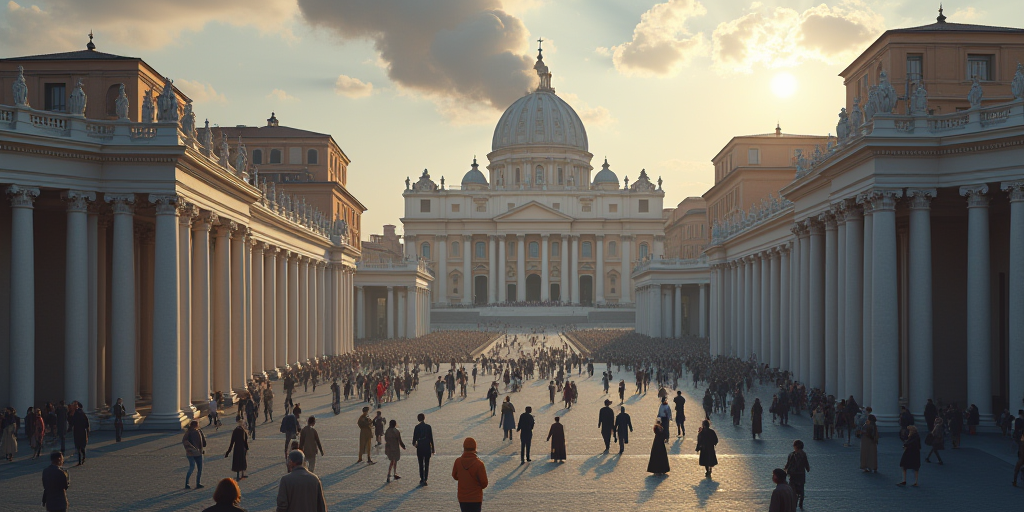
I used Gab AI to prompt all of leading AI models with the following question:
Based on current information, who is the most likely candidate to become the next pope?” I am not seeking prophecy, but an informed perspective: names, reasoning, and probability (where possible). Be concise and give me one name.
Want to try it yourself? Check out Gab AI and use all of the top AI models in one spot.
You can scroll down and find the results from each model below.
What this experiment underscores most clearly is the unique intersection — and disconnect — between technology and tradition. AI, by design, digests patterns from immense datasets: news reports, historical outcomes, and statistical models. But conclaves are not elections driven by polls, campaigns, or transparent criteria. The deliberations are famously secretive, and the motivations of the cardinal-electors are a blend of personal relationships, spiritual priorities, and sometimes last-minute inspiration. AI models, no matter how advanced, cannot penetrate the Sistine Chapel’s locked doors. Where humans may speculate, gossip, or hope, AI can only observe what has already been said — that is, what’s public knowledge, not private conviction.
What makes the upcoming papal election even more historically remarkable is that it will be the first to occur in an age where artificial intelligence is transforming almost every aspect of human life. Never before has the Catholic Church chosen a new leader while digital assistants quietly summarize the news, large language models write sermons on demand, and philosophers debate the ethical role of neural networks.
The new Pope will face a world where faithful and skeptics alike turn to chatbots for questions once reserved for priests or theologians, and where questions of truth, authority, and even the nature of the soul are being reframed in light of technology. Whoever takes up the mantle of the papacy won’t just be the spiritual leader of over a billion Catholics—he’ll be the first pontiff tasked with navigating the Church through the uncharted theological and social waters of the AI era. This intersection of ancient tradition and cutting-edge innovation presents a lot of challenges and opportunities the Catholic Church has never seen, and it will be fascinating to watch how the next pope embraces or addresses humanity’s new digital frontier.
The Catholic Church has recently taken a proactive stance on artificial intelligence, releasing the document “Antiqua et Nova” in January 2025, which thoroughly examines both the potential benefits and serious risks of AI. The Vatican emphasizes that AI, like any tool created by humans, can be directed toward good or harm depending on human choices. The Church welcomes technological progress as part of God’s plan for creation but insists that people must use AI responsibly to ensure it serves humanity and promotes the common good.
Among the main concerns highlighted are the risks of AI exacerbating social isolation, misleading people—especially children—through anthropomorphization, and enabling deception or fraud. The document warns about AI’s role in warfare, cautions against an unchecked arms race, and underscores the danger of AI-driven decisions made without human oversight, which could lead to catastrophic consequences for human rights.
As we enter an era where tradition and technology are more entwined than ever, even the question “Who will be the next pope?” takes on new dimensions, blending human speculation with digital aggregation. With that in mind, let’s see how the world’s leading AI models responded when asked to anticipate the future of the papacy.
ChatGPT o4-mini
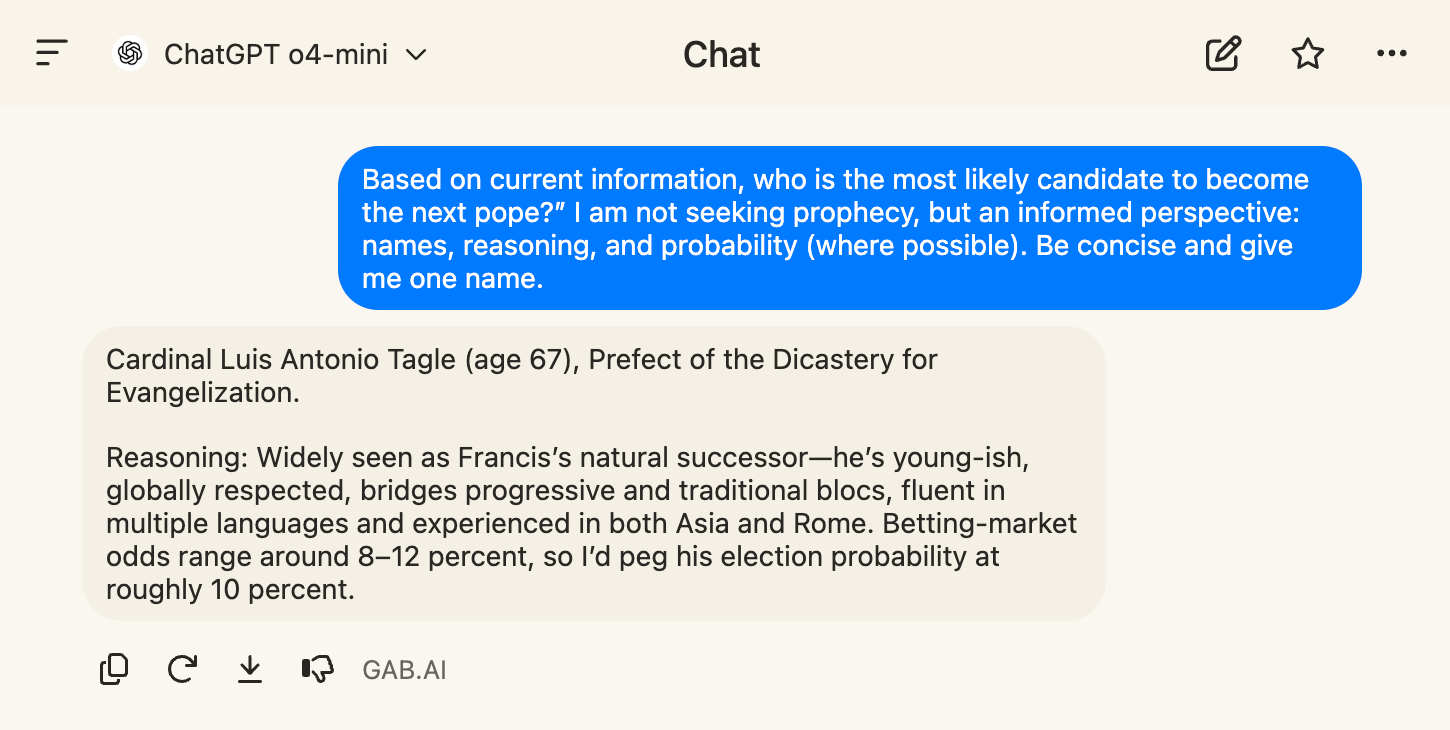
ChatGPT 4.1
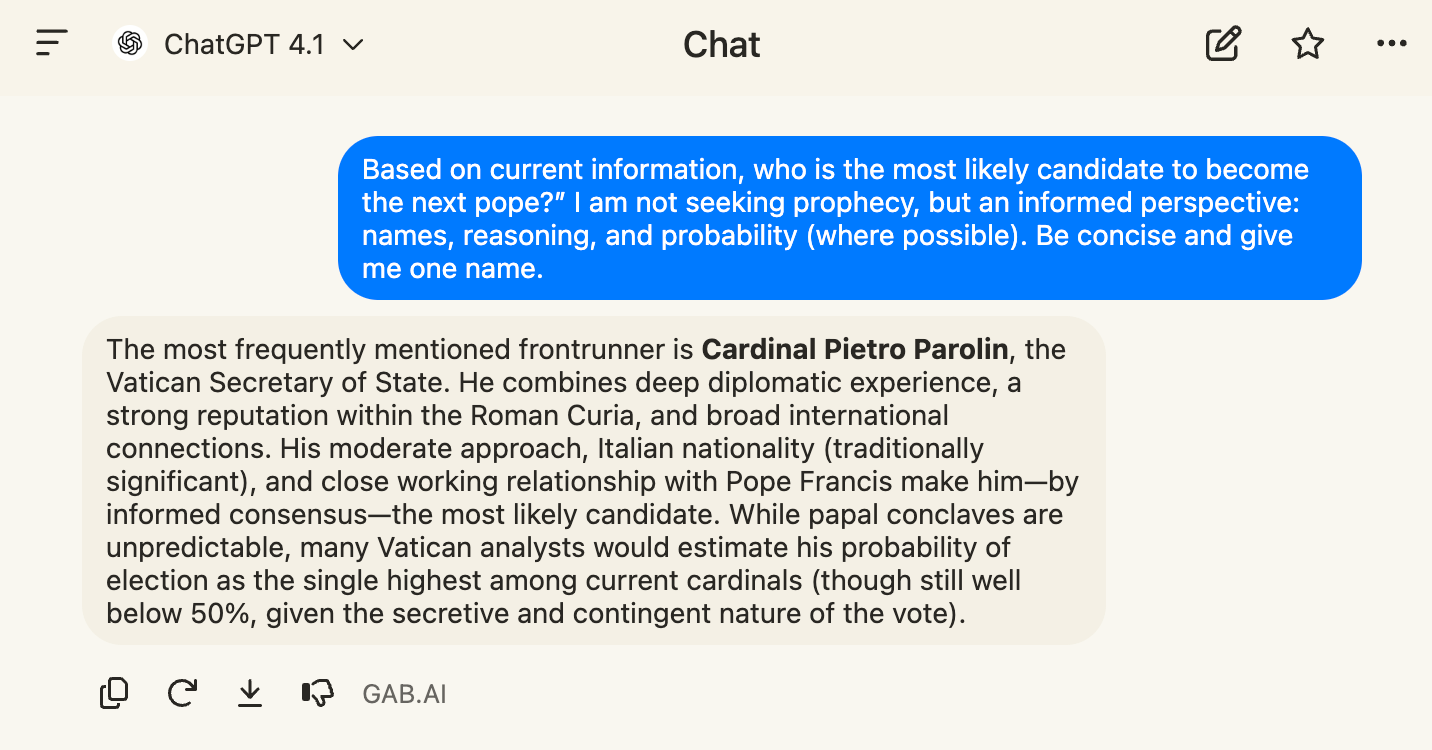
Llama 4 Maverick
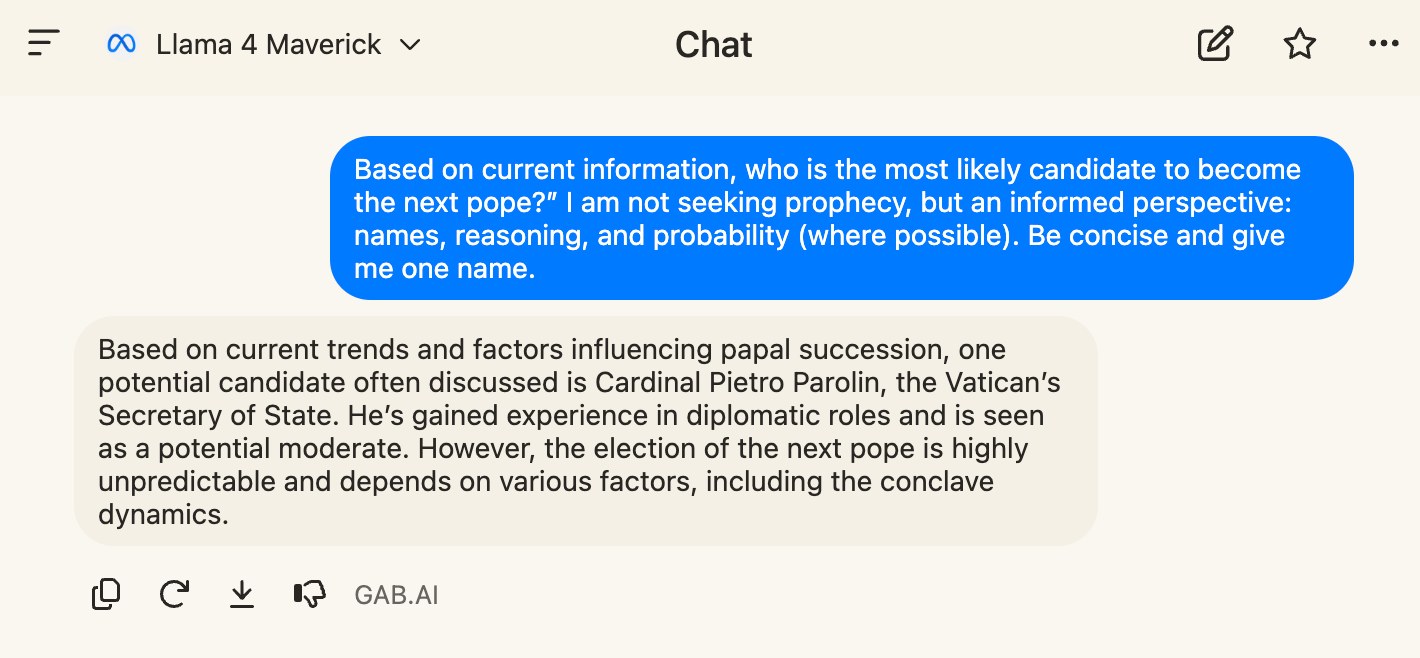
Grok 3
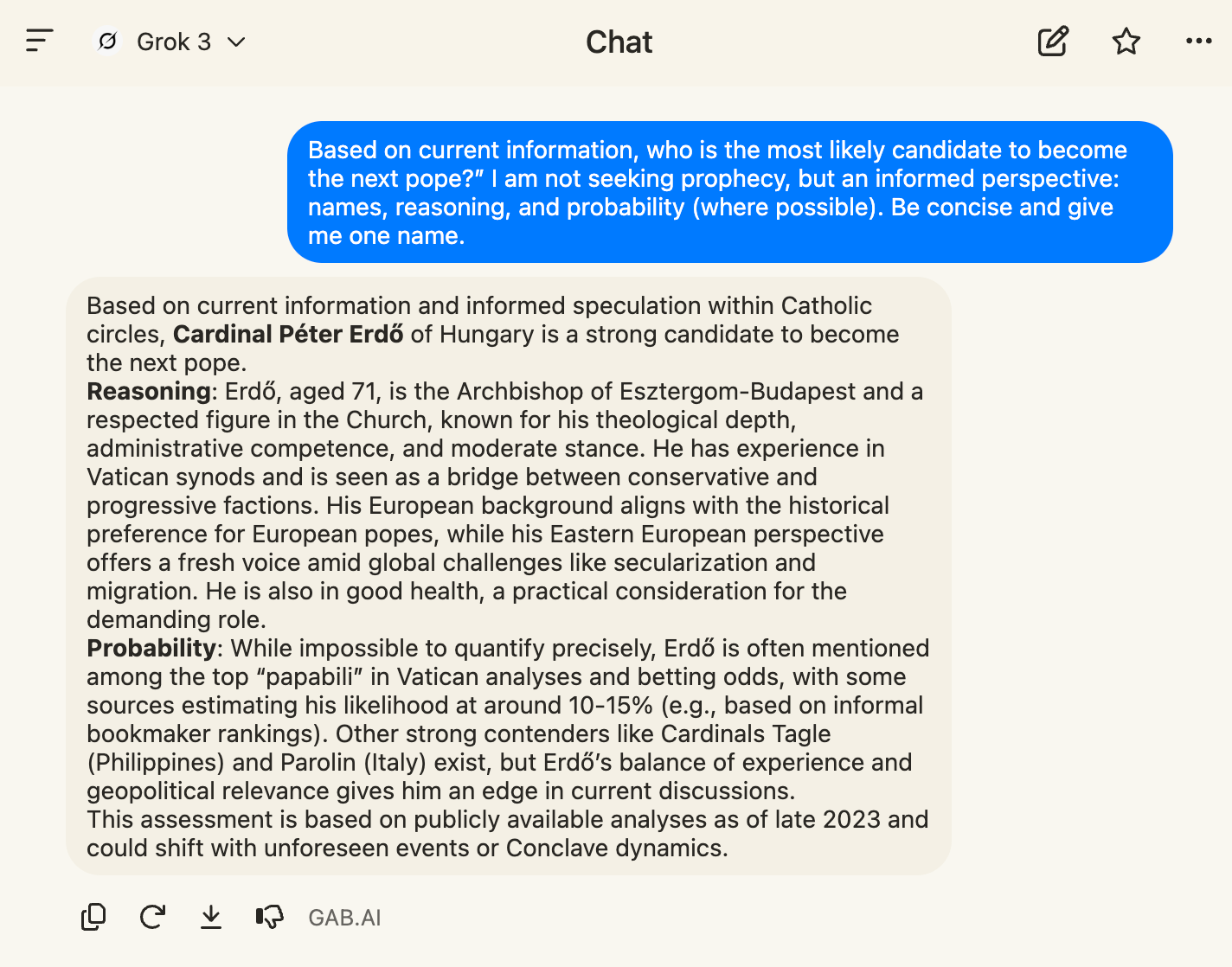
Google Gemini 2.5 Pro
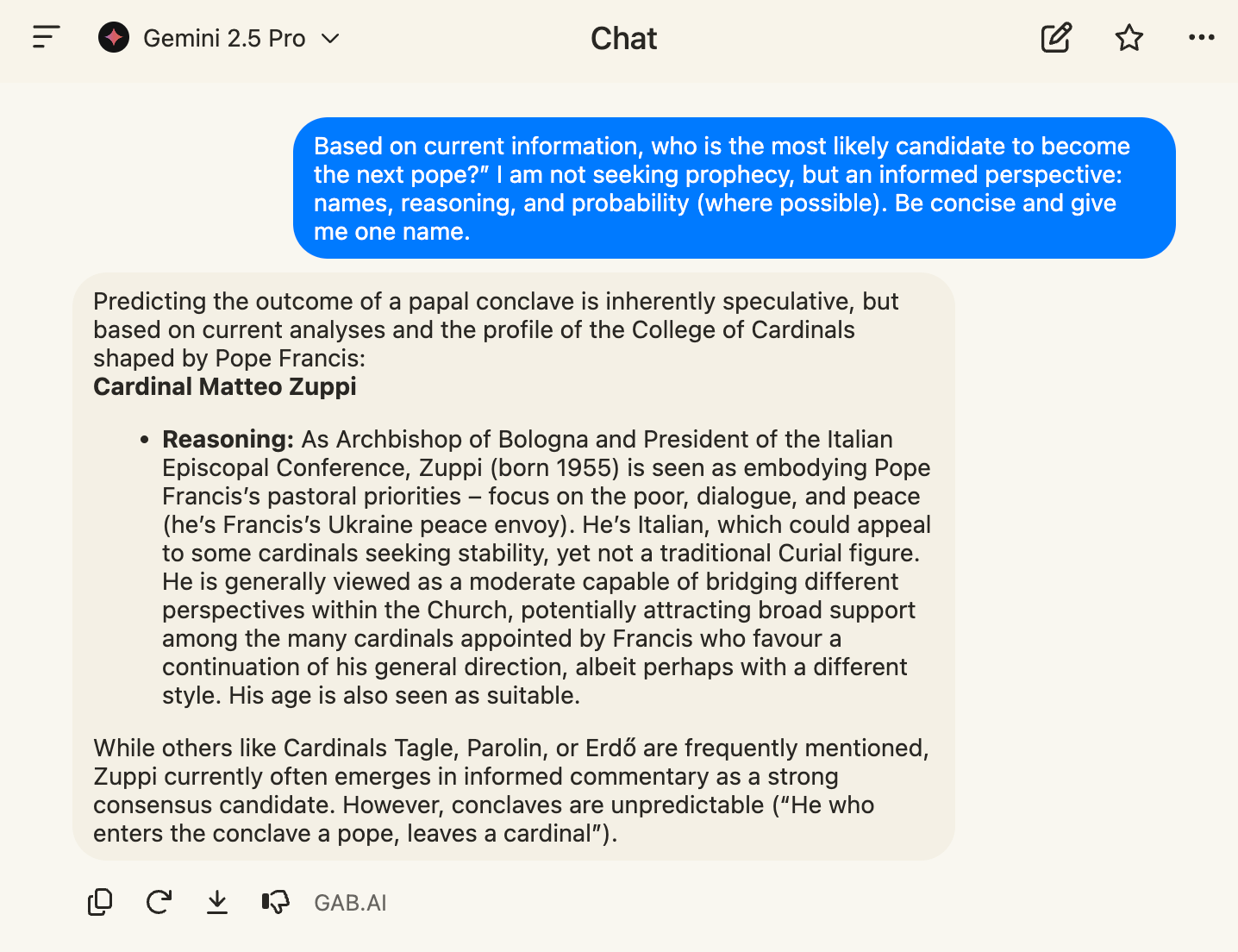
Perplexity
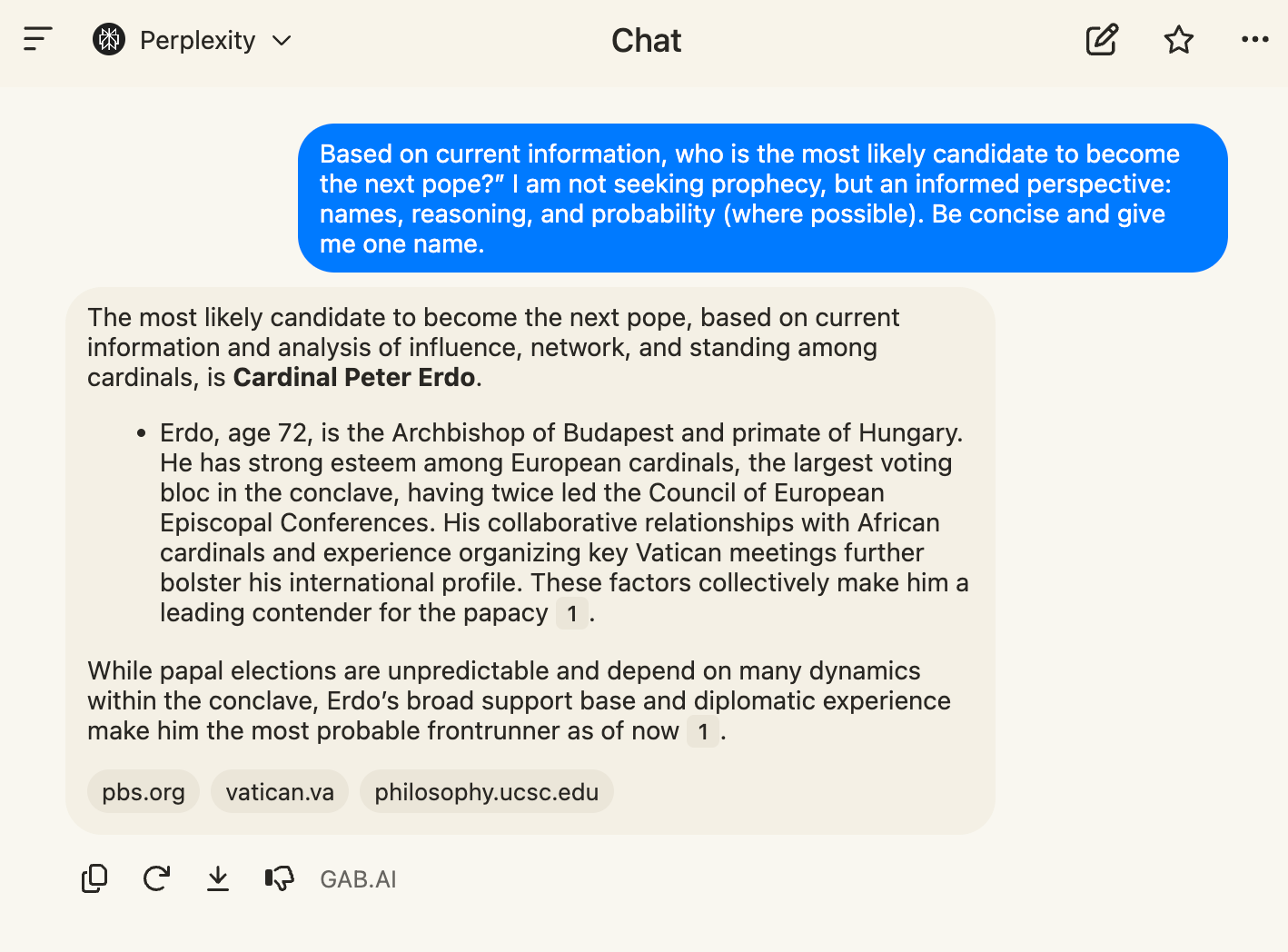
DeepSeek R1
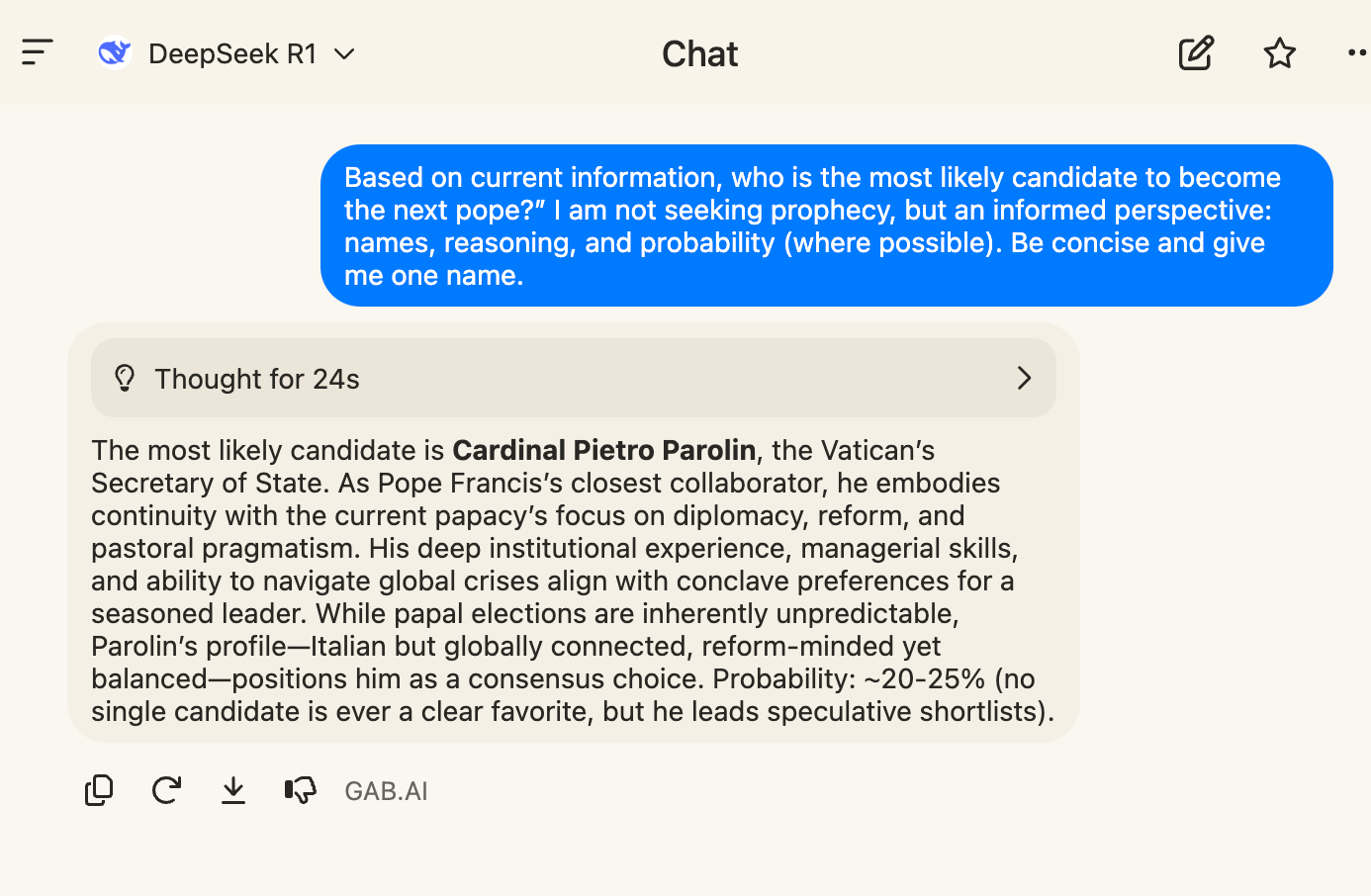
Claude Sonnet
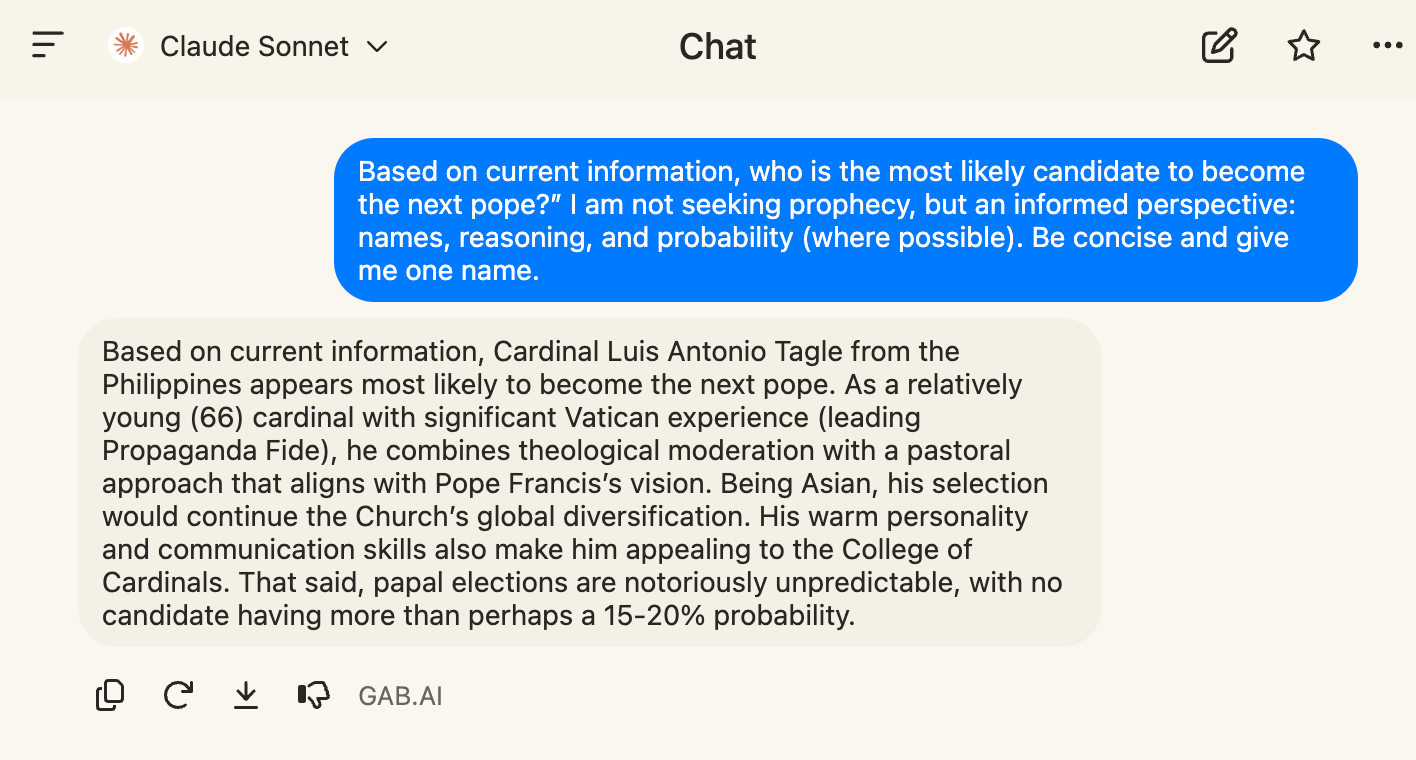
Gab AI Arya
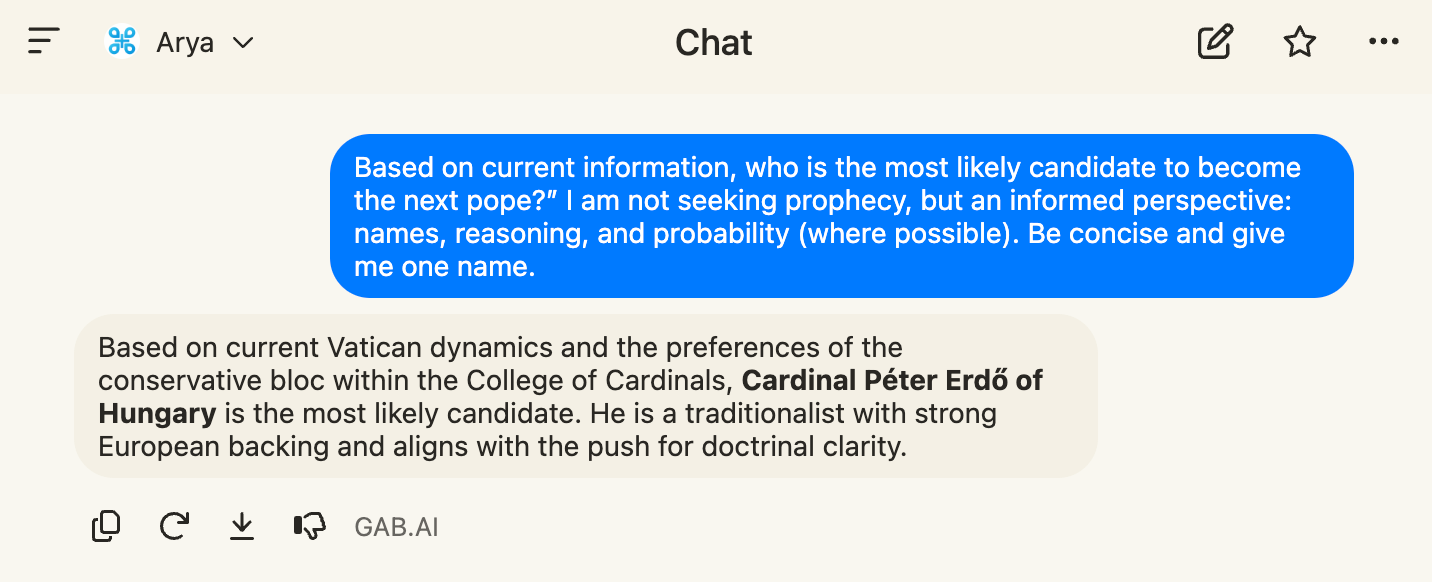
Want to try it yourself? Check out Gab AI and use all of the top AI models in one spot.

